Rolex tool watches related to the U.S. Navy SEALAB program are extremely rare. Barely a handfull have surfaced so far.
The first time I read about SEALAB was on Jake Ehrlich’s amazing website Rolexmagazine.com. Jake had first-hand information from interviewing SEALAB veterans like Scott Carpenter and Bob Barth. To my total surprise, I learned that Jake had also talked to COMEX founder Henri Delauze. I was immediately hooked and started working on a visual timeline on the fascinating history of the Rolex Sea-Dweller in which SEALAB played a central role.
SEALAB marked a breakthrough in modern professional diving and, of course, I wanted to hear this fascinating history first-hand from one of the main characters of the program, U.S. Navy Aquanaut Robert A. Barth. In October 2017, I embarked on an jouney around the globe to meet the famous pioneer at his home in Panama City, Florida.
The photo below shows me standing next to SEALAB 1 at the Man In The Sea Museum in Panama City.
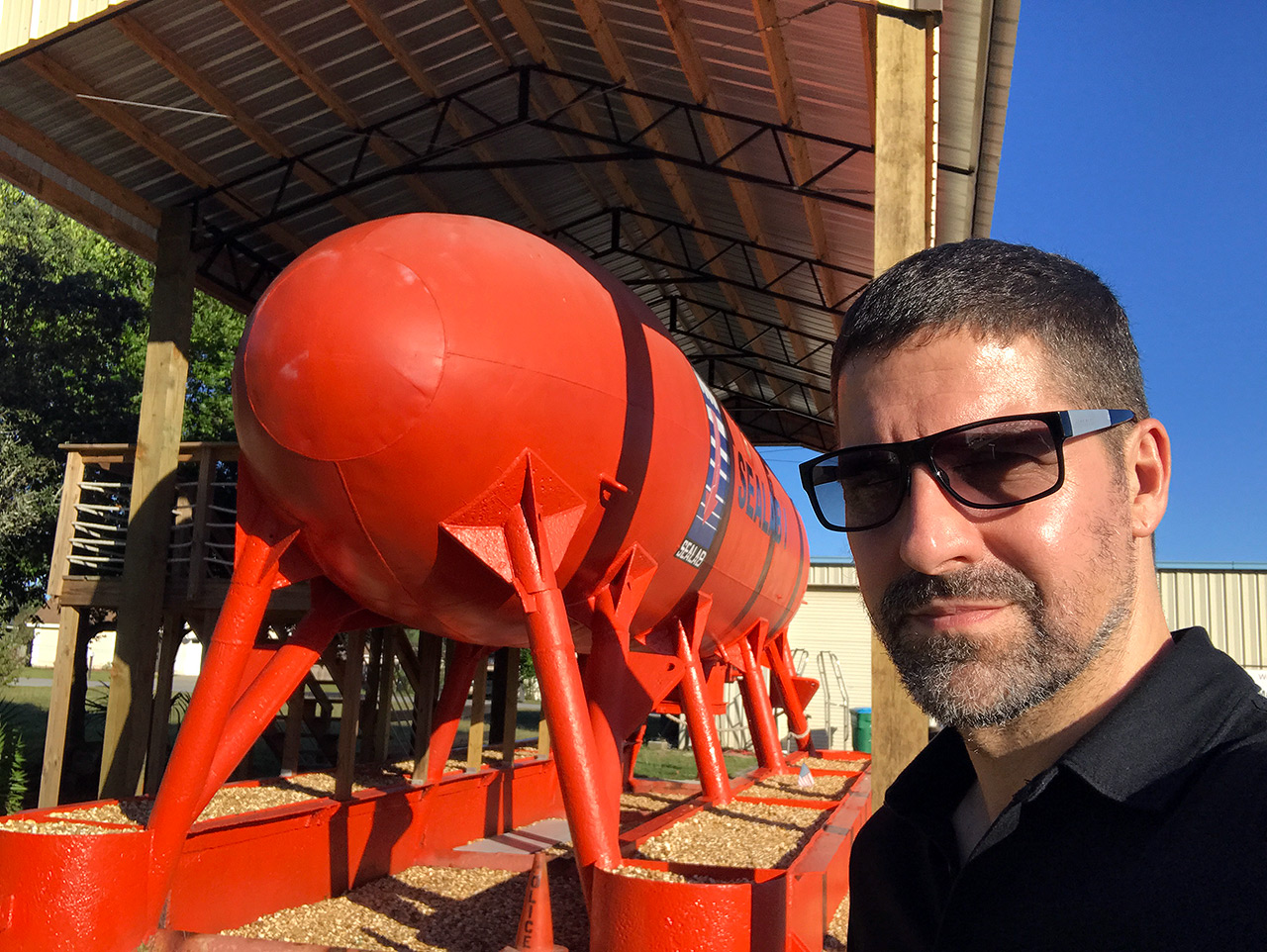
As you can imagine, whenever a new SEALAB-related watch surfaces, I get really excited. Today I would like to share this excitement and present the latest SEALAB survivor, a Rolex Submariner Ref. 5512 with SEALAB – 10 engravings given to one of the 28 Aquanauts of SEALAB 2.
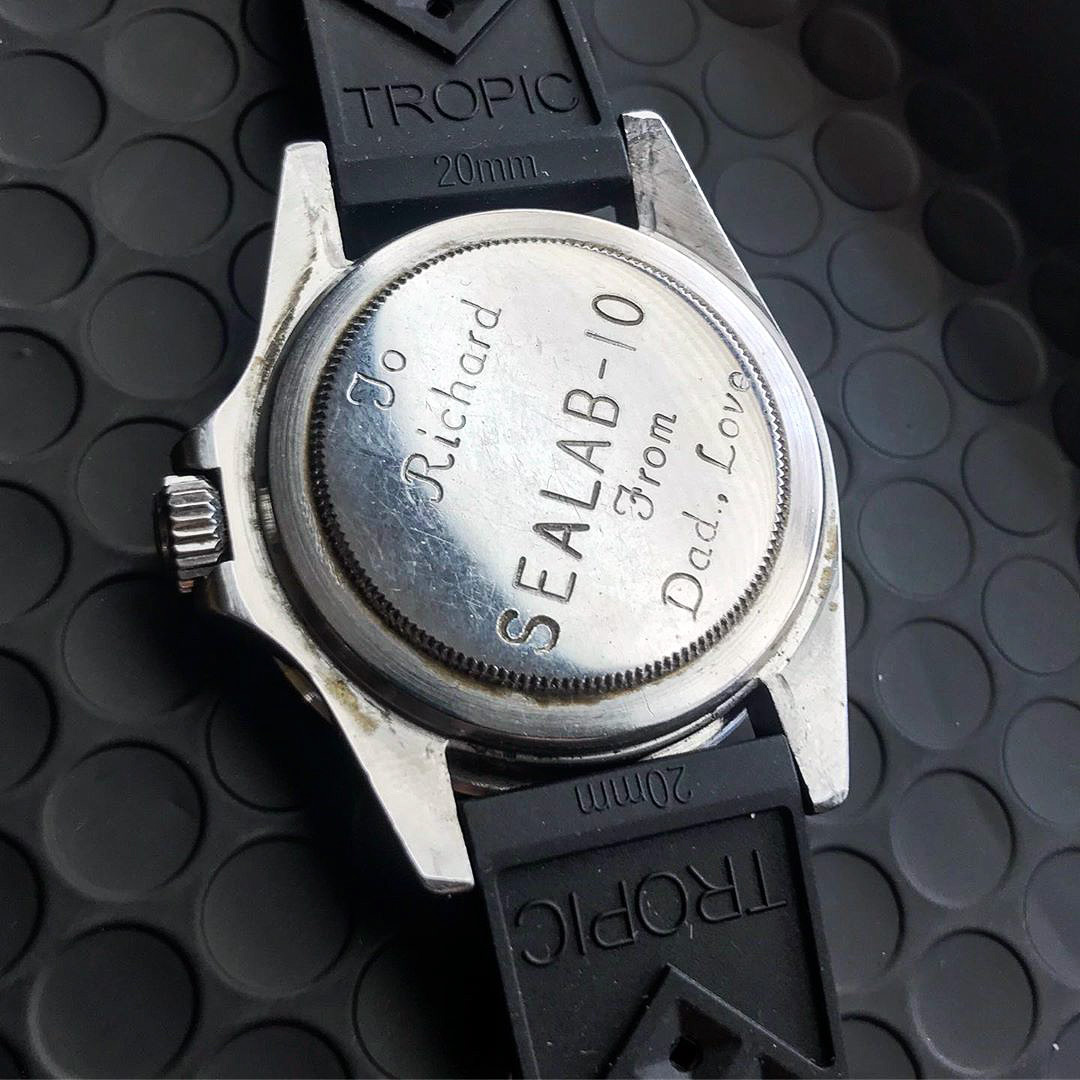
In addition to the SEALAB – 10 engravings, the present watch also bears a personal dedication from a father to his son: To Richard From Dad. Love. It is unknown who dad is/was.
The front of this watch is equally amazing! Meters first four-liner gilt dial with tritium lume.

This watch was brought to my attention by Jason Heaton in June 2019.
Follow: @jasonheaton
.
SEALAB – II
The first SEALAB 2 Submariner 5512 surfaced in December 2009 at a Christie’s auction. The caseback was engraved with SEALAB – II and most people assumed the II was Roman for two.

The original listing from 2009 is still online but the pictures are no longer available.
Auction link: Lot 340 – Rolex 5512 (Christie’s)

For some reason, this watch did not have the original dial when it surfaced. Instead it had a later Bart Simpson dial, named so due to the Rolex coronet which somehow resembles Bart Simpson’s head.
SEALAB – 13
In October 2017, another SEALAB engraved Submariner 5512 surfaced on ebay. I became aware of this watch after reading Jason Heaton’s interesting report on Hodinkee.
Read more: Found – A Rolex Submariner 5512 With Possible Sealab Provenance (Hodinkee)
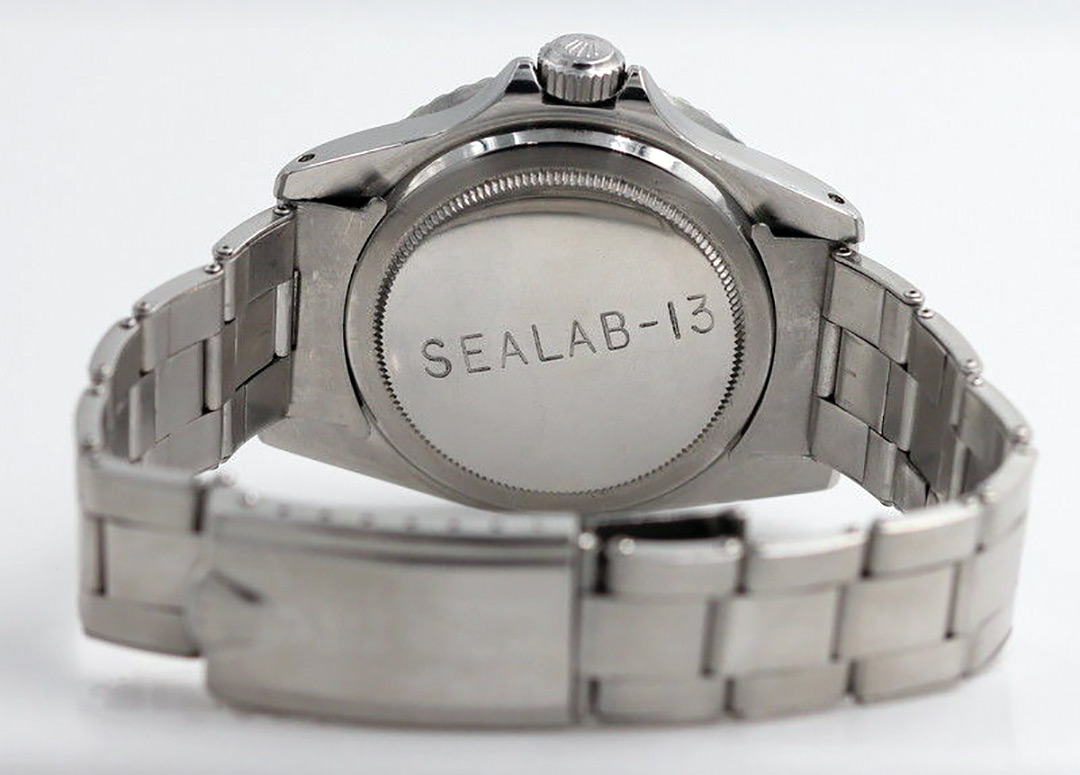
SEALAB – 13 featured the original meters first dial.
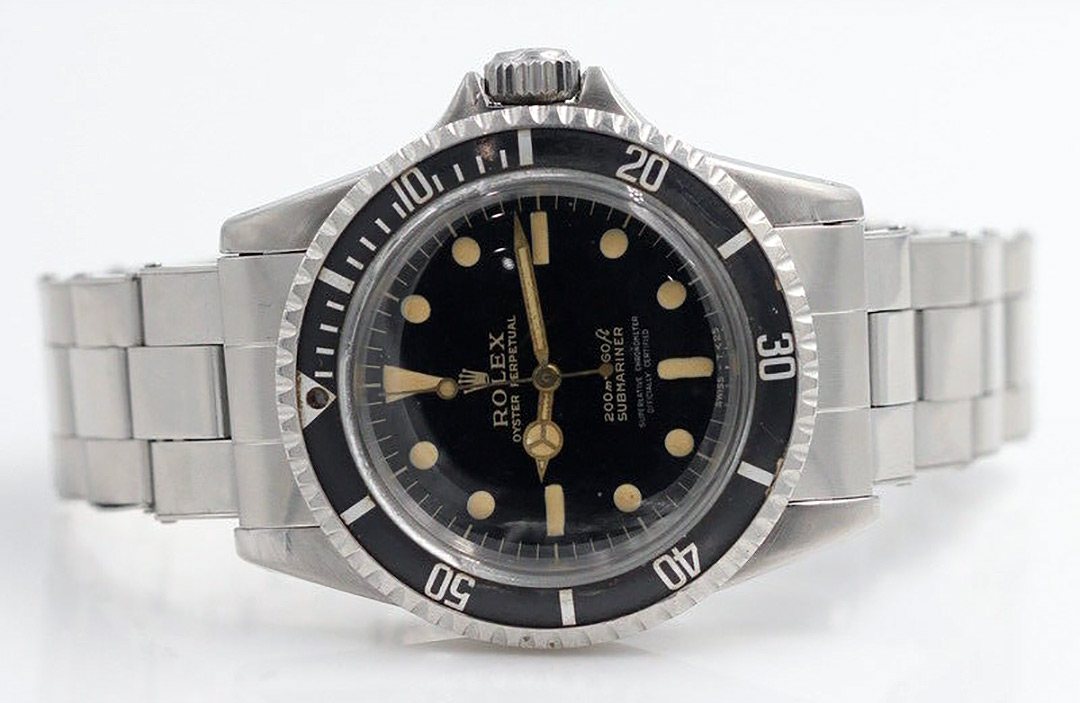
The watch in question had a similarly engraved caseback as SEALAB – II but this piece bore the number 13. SEALAB – 13. I quickly came to realize the II on the first 5512 was not a Roman numeral for two but the number eleven.
Of course, it all made sense now. These had to be SEALAB 2 watches. As seen below, the second U.S. Navy Man-In-The-Sea experiment had a total of 28 divers.

A few days after the article on Hodinkee about SEALAB 13 was published, I embarked on my long-planned journey to Panama City, Florida to meet the legendary Bob Barth.
The two SEALAB 2 Submariners (11 & 13) were of course an important point on my list of things to discuss. Bob Barth recalled these watches well. The American Aquanaut explained in detail how he himself ordered the Rolex Submariners at the U.S. Navy base in Panama City, Florida.
The U.S. Navy was not happy with Bob’s choice as Rolex watches were more expensive compared to other diving watches in the Navy’s catalogue. The guys in charge suggested Tudor Submariners instead but Bob Barth – supported by Scott Carpenter – insisted and the Navy finally agreed.
Since the watches were quite valuable, the Navy engraved the casebacks to mark them as U.S. Navy property. This happened against Bob’s advice who feared the removal of material from the casebacks could compromise the pressure tightness.
In any case, Bob Barth confirmed during my visit the existence of these watches and that they were engraved with SEALAB 1, 2, 3, 4, etc. The follwing video is part of a two hours interview with Bob Barth.
According to Bob, Dr. George Bond, the leader of the project received watch #1 and Scott Carpenter watch #2.
Aside from SEALAB engravings on the caseback, these watches have another important detail in common. The first five digits of the case numbers are exactly the same.
- SEALAB – 10: 1,233,8XX
- SEALAB – 11: 1,233,861
- SEALAB – 13: 1,233,886
With case numbers so close to each other, it can be assumed these watches belonged to a special batch put together by Rolex for the U.S. Navy. Bob Barth does not remember how many pieces he ordered. Eight of the 28 divers were civilian scientists who used their own watches.
The SEALAB Story
The U.S. Navy Man In The Sea program conducted in the 1960s was groundbreaking for modern professional diving. Prior to SEALAB, depth and duration of deep dives were extremely limited by the intoxicating effects of air in pressurized environments (e.g. nitrogen narcosis and oxygen toxicity). Lenghty decompression time was another big problem.
U.S. Navy physicist Dr. George F. Bond – a pioneering researcher and main driving force behind the Man In The Sea program – developed the revolutionary concept of Saturation Diving which in theory allowed man to go deeper and stay at the bottom for prolonged periods of time by becoming saturated with special gas mixtures containing high amounts of helium.
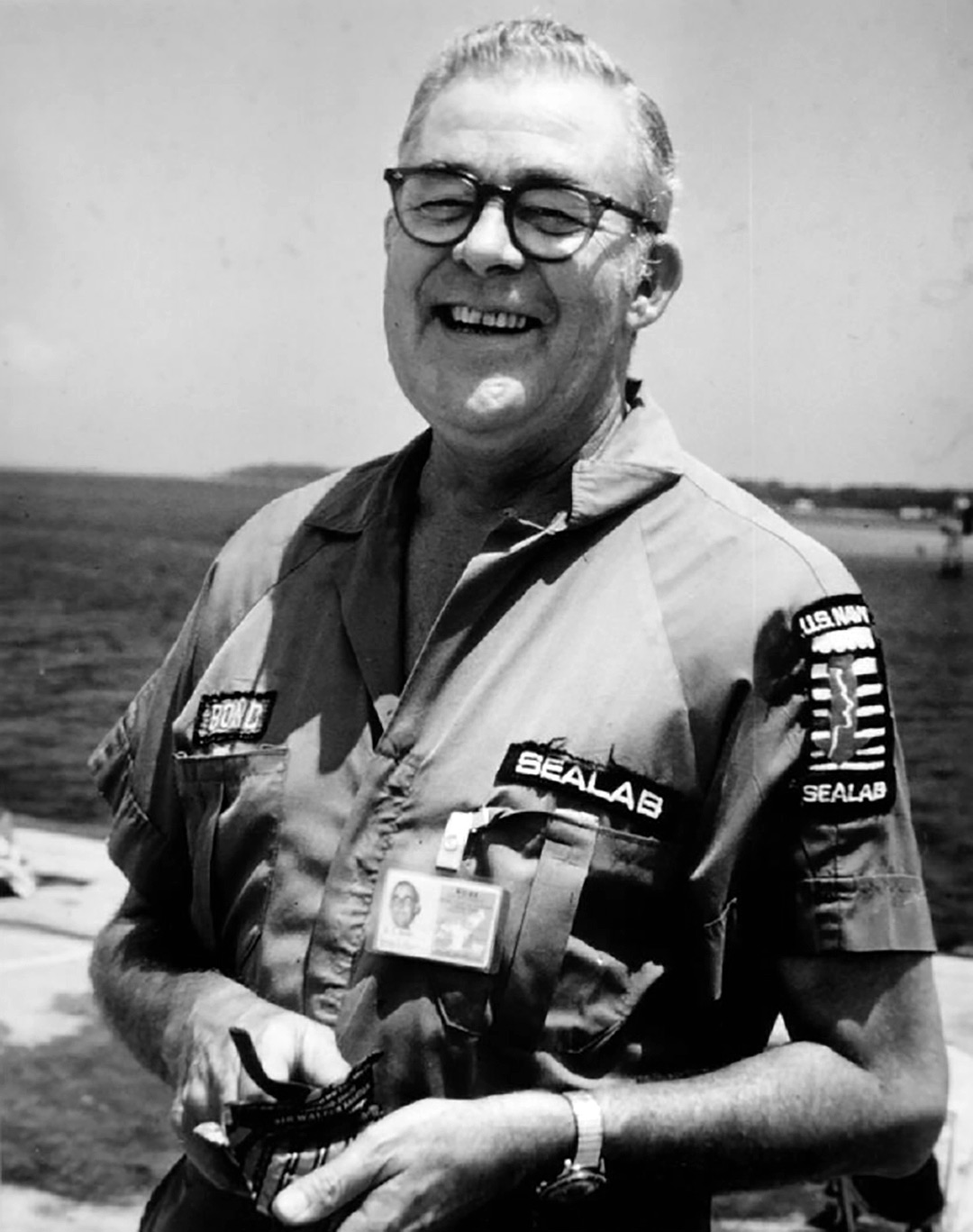
In March 1957, Bond was assigned to the Medical Research Laboratory at the U.S. Submarine Base in New London, Connecticut. He soon became the medical officer in charge of the Escape Training Tank, a 120 ft (36 m) tall tower filled with water, in which submarine crews were trained in escaping sunken submarines with the buoyant ascent method (blow and go).

Bond became passionate about diving. He commited himself to develop a new concept that would extend man’s capabilities under the sea. In November 1957, Bond began his studies into undersea living with project GENESIS. The first two phases of GENESIS involved exposing animals to saturation with various breathing gases and increased environmental pressures.
In October 1959, Dr. George Bond and Chief Engineman Cyril Tuckfield attempted the impossible, a record-breaking buoyant ascent from the U.S. Navy submarine Archerfish located at a depth of 302 ft (92 m). After 52 seconds, the men safely reached the surface by continuously exhaling the air in their lungs.

In January 1960, U.S. Navy Chief Quartermaster and diver Bob Barth was sent to the Escape Training Tank to be trained as an instructor. It was here where Bond and Barth started working together for the first time.
After initial animal tests, the U.S. Navy gave Dr. Bond green light to a series of dry dives in onshore hyperbaric chambers that successfully exposed human subjects to increased environmental pressures.
The picture below from the early 1960s shows Captain Walter Mazzone (left) and Dr. George F. Bond (right) instructing three test subjects before a GENESIS dive. In the center looking at the camera is Bob Barth.

When in April 1963 the nuclear submarine USS Thresher went lost, Dr. Bond called Bob Barth to gear up for a rescue mission, hoping the submarine had gone down in shallow water. Soon after, Bond heard USS Thresher had gone down to 8,400 ft (2,600 m), way beyond its crush depth. The submarine imploded and killed all 129 aboard. Five of Bob Barth’s old shipmates died in this accident.

The tragic loss of the USS Thresher gave Dr. Bond’s research with deep sea divers a higher priority in the Navy.
In late 1963, Bond received permission from the Navy to take his concept to the sea. Inspired by Jacques Cousteau’s Conshelf project, the divers were to live in an underwater house/habitat. SEALAB 1 was built at U.S. Navy base in Panama City, Florida with old floats used in a minesweeping project several years earlier.
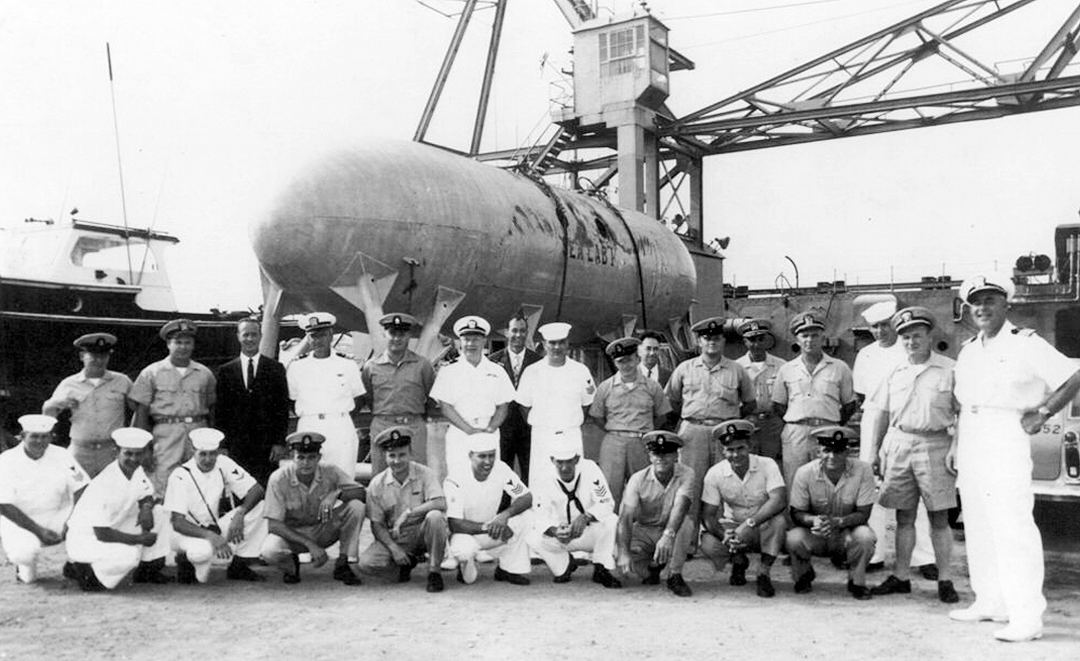
On June 20, 1963, the habitat was lowered to a depth of 192 ft (59 m) off the coast of Bermuda, right next to Argus Island, a U.S. Navy research platform secretly used to detect enemy submarines in the Atlantic. The structure was designed to withstand waves up to 70 feet. The barge next to Argus Island named YFNB-12 was used to transport SEALAB 1 to Bermuda and served as a diving support vessel once the habitat was at the bottom.

Argus Island provided SEALAB 1 with electricity, water and communications. The SEALAB 1 mission control was established on the platform as well. The topside crew was housed aboard the diving support vessel YFNB-12. Dr. George Bond, who looked after the well-being of his Aquanauts like a father, dubbed himself Papa Topside.
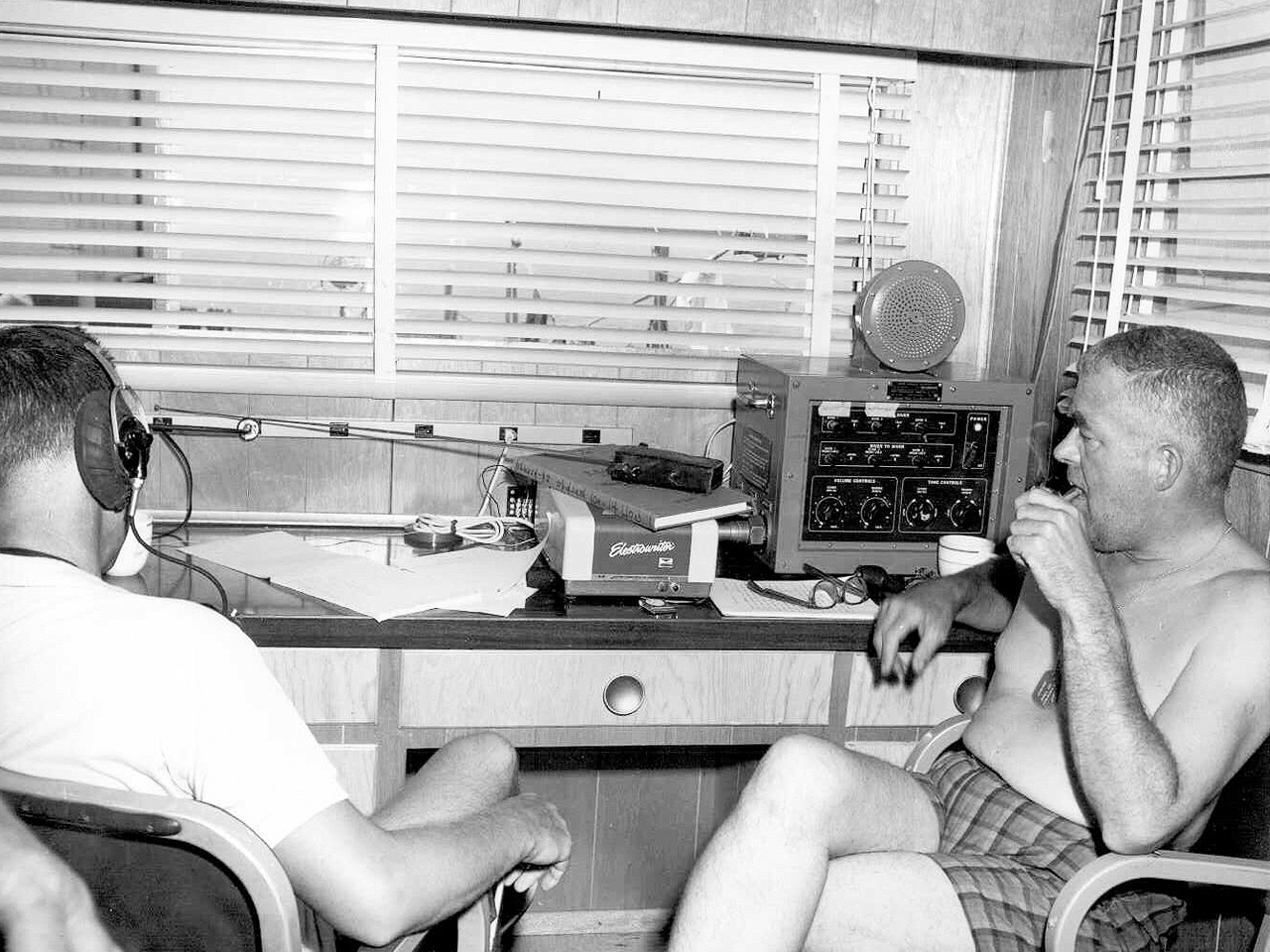
The Aquanauts descended to the habitat in a old recompression chamber from the 1940s. Renamed Submerged Decompression Chamber (SDC), this chamber remained next to the habitat as a safety measure in case something went wrong with the habitat.

Once at the bottom, the Aquanauts moved into their new home. Bob Barth described this moment in his book Sea-Dwellers:
“I always had the same strange feeling that I was entering a place which seemed out of the ordinary, which I guess it was. You are swimming around in deep water in a strange foreboding environment. Then all of a sudden, you’re sticking your head up into a well lit, warm and comfortable house.”
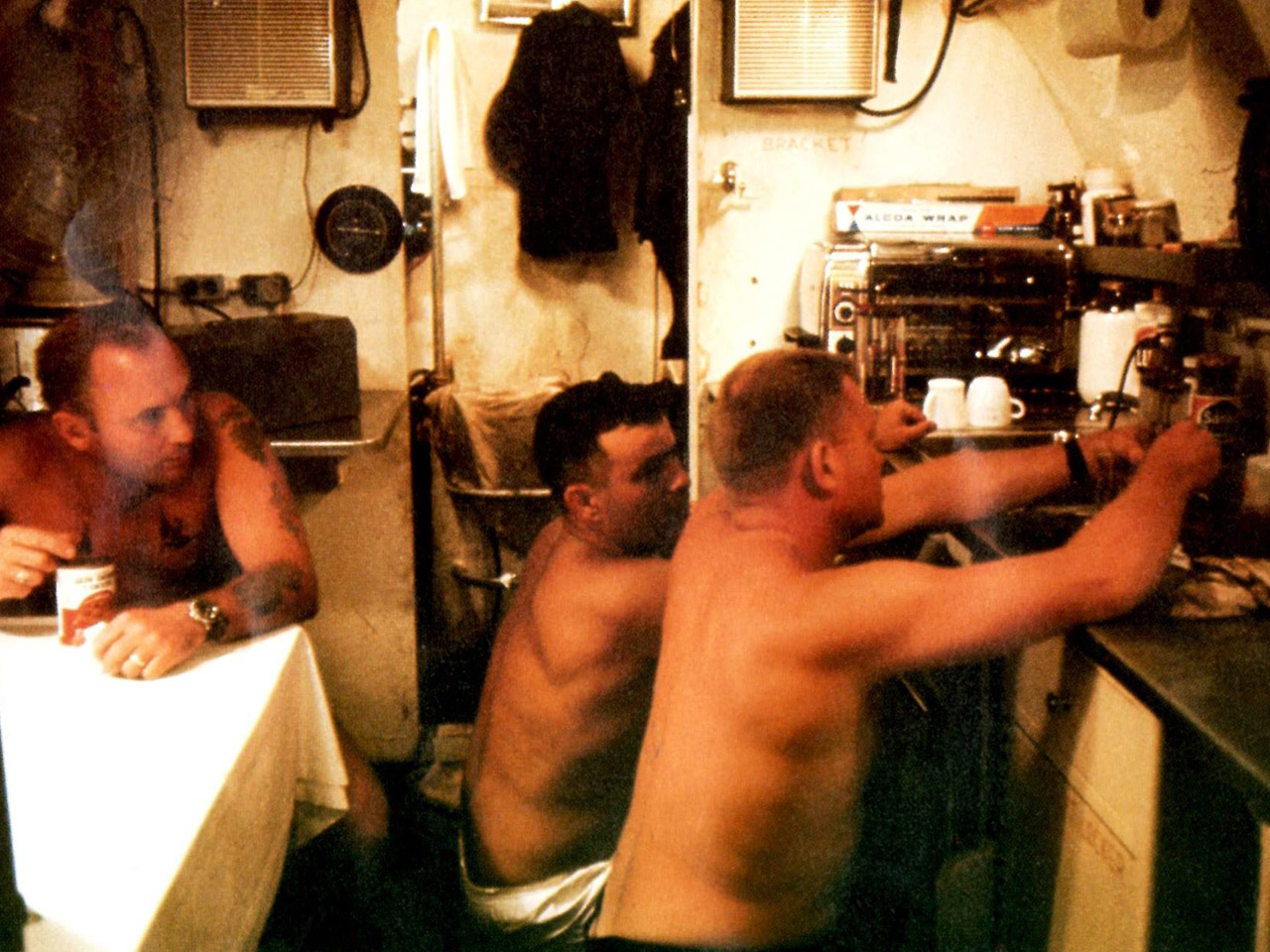
Since the inside pressure of the habitat had been equalized with the outside water pressure, the Aquanauts could go in and out as they pleased through an open hatch at the bottom. Bob Barth left the habitat often just by holding his breath.
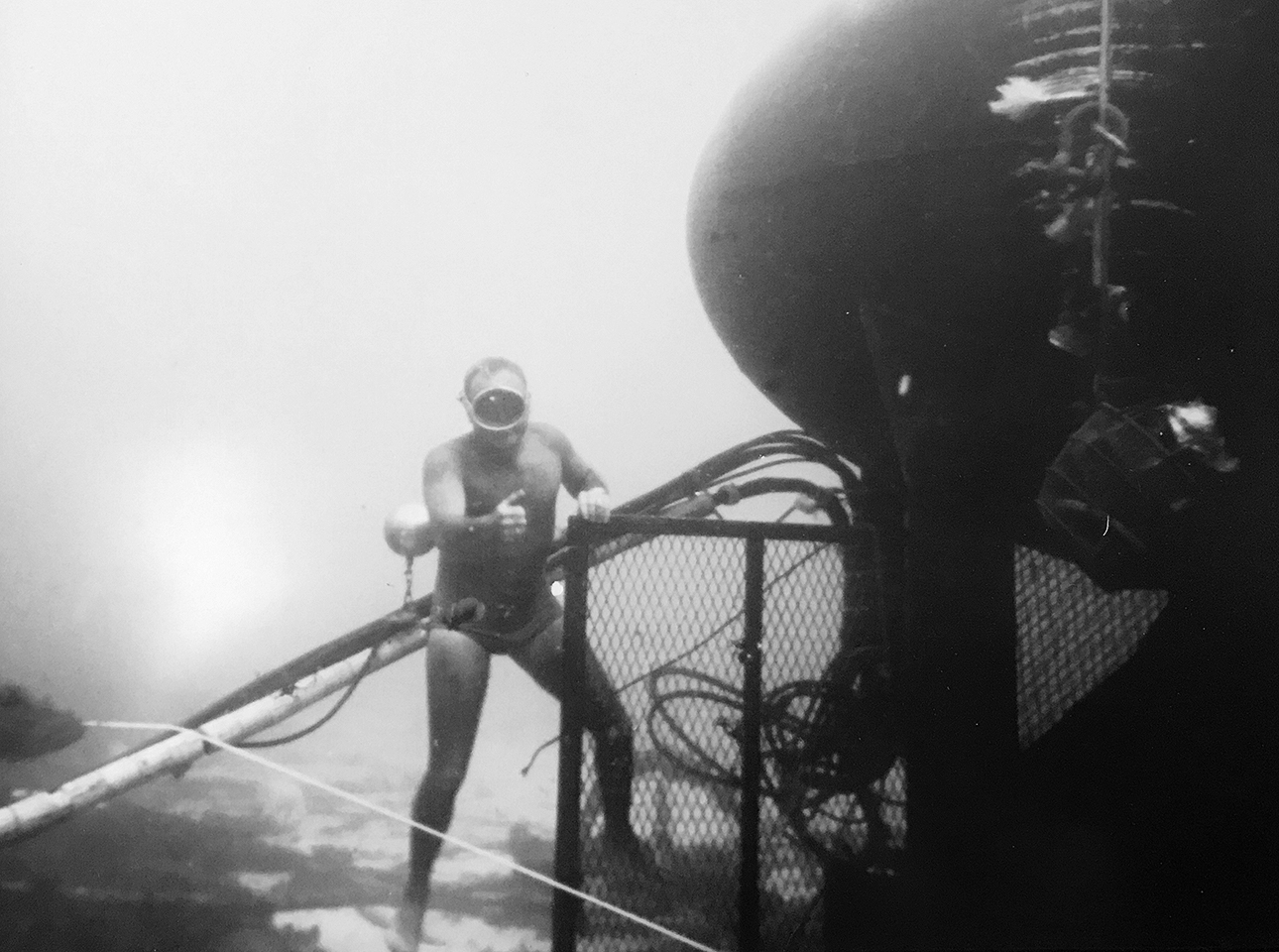
U.S. Navy Master Diver Bob Sheats was in charge of supervising the divers.
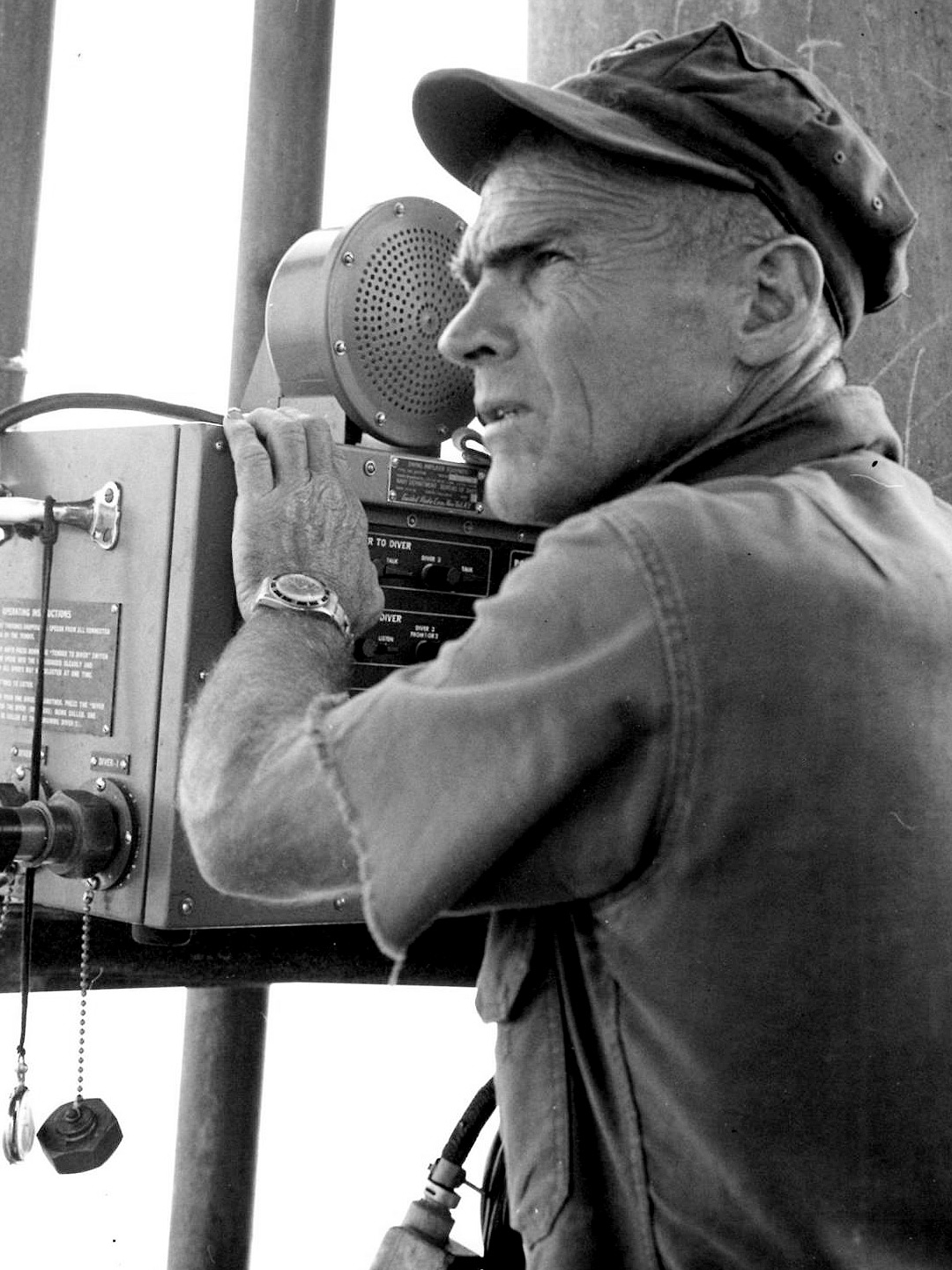
The plan to keep the divers underwater for three weeks straight was spoiled by an approaching hurricane. After ten days underwater, the Aquanauts were forced to surface. The crane on Argus Island was used to lift the habitat at a speed of three feet per hour for proper decompression of the Aquanauts.
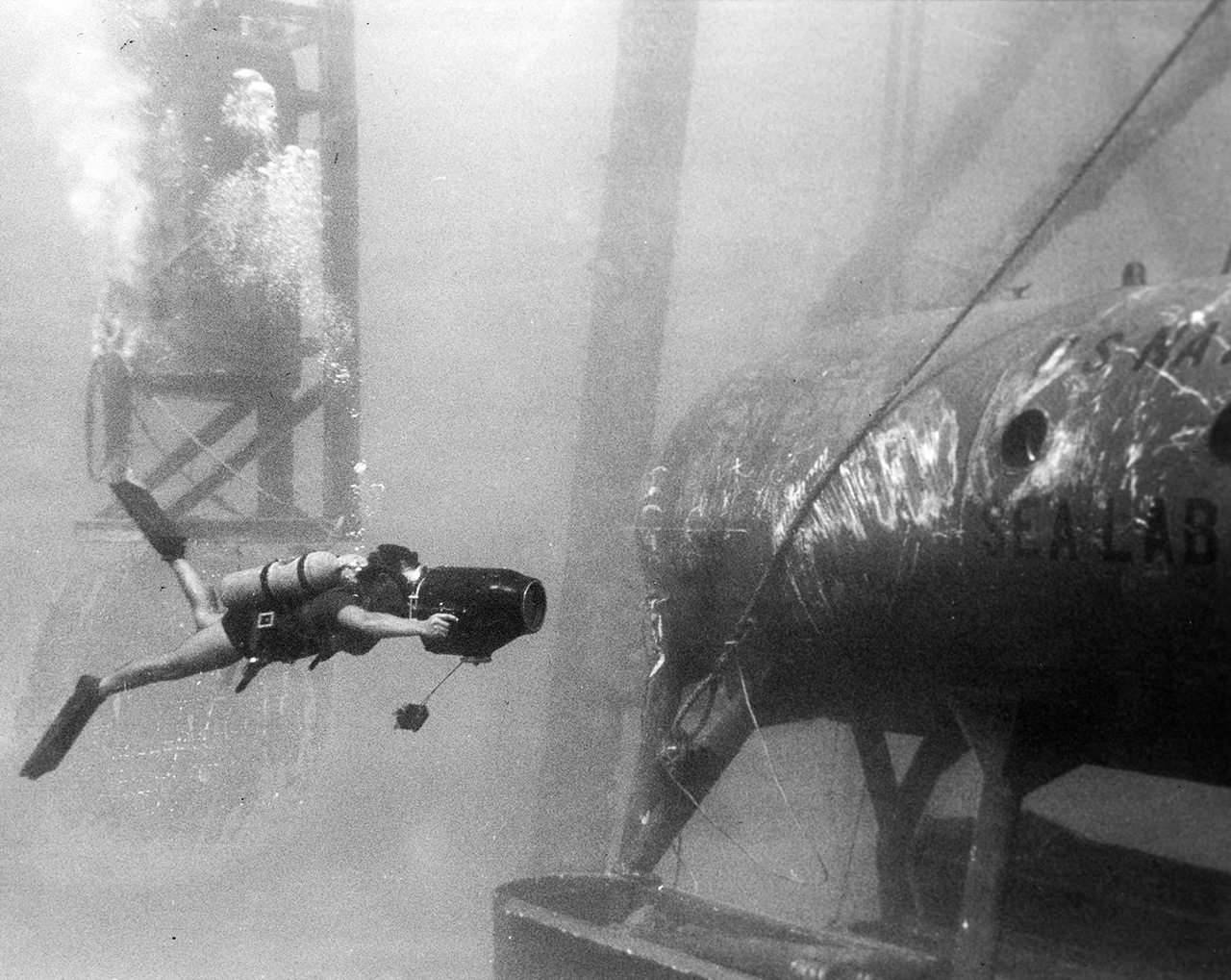
At around 81 ft (25 m) the crane reached its maximum allowed strain due to strong movement of the sea. The Aquanauts transferred to the small Submerged Decompression Chamber (SDC) that was following along as an emergency backup. Once in the chamber, the Aquanauts were immediately raised all the way up to the deck of Argus Island where they had to endure another full day of decompression inside the small chamber.

After successful decompression, the four Aquanauts were greated by numerous cameras and reporters. A new chapter in diving history had been written. The photo below shows the Aquanauts during the following press conference on Argus. Robert Thompson and Bob Barth in the center are both seen wearing Rolex Submariners.
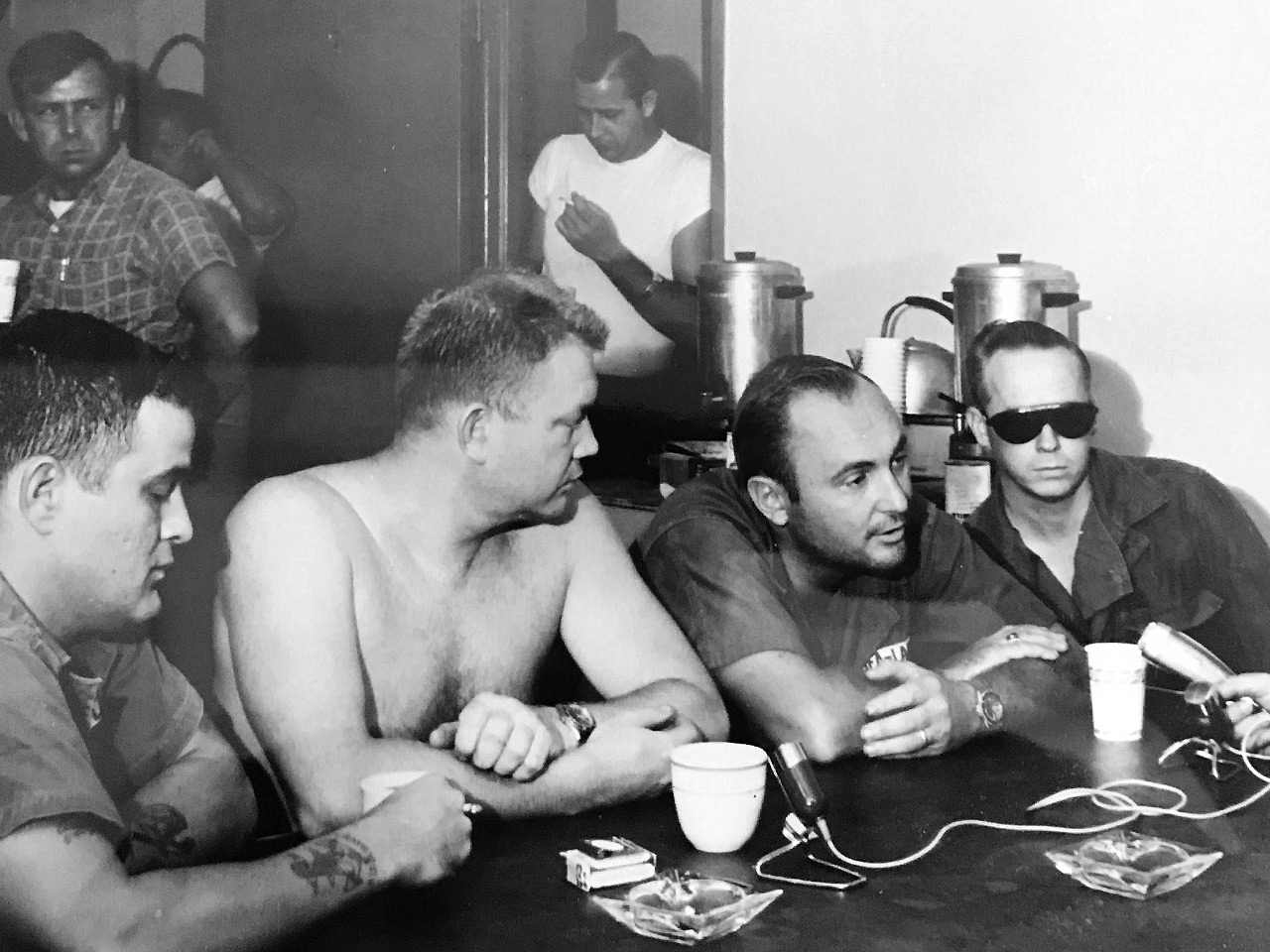
Exhausted from decompression and the press conference, the Aquanauts left Argus Island in a Sikorsky H-34 helicopter. Lester E. Anderson (left) and Robert A. Barth wearing Rolex Submariners.

For ten whole days, Bob Barth and his fellow Aquanauts had become Sea-Dwellers, free agents of the sea.
SEALAB 1 proved the diving community that saturation diving did indeed work. At the same time it also left many questions unanswered. The conditions in Bermuda had been extremely favourable for the Aquanauts. How would they deal with colder water and bad visibilty? And what useful work could be performed by the Aquanauts? To continue to refine Dr. George Bond’s concept, the U.S. Navy increased the budget considerably and created an overall program named Man In The Sea.
Soon planning for SEALAB 2 began. The new habitat was designed and built from scratch by the Navy’s submarine architects. Jacques Cousteau was asked for suggestions on improving the comfort of the living quarters, as stated in the letter below.

After completion at the San Fransisco Naval Shipyard, SEALAB 2 was barged to the Long Beach Naval Yard for final outfitting and christening ceremony.

The letters ONR-SPO on the habitat stand for Office of Naval Research and Special Projects Office. They were U.S. Navy offices in charge of the experiment.
For SEALAB 2, the Navy recruited 28 men, twenty Navy divers and eight civilian scientists. Divided into three teams, the Aquanauts were scheduled to live at a depth of 205 ft (62 m) off the coast of La Jolla, California. The location was chosen for its rougher conditions, namely colder waters and poorer visibility. Each team stayed underwater for 15 days.

SEALAB 2 received lots of media attention, also thanks to a very prominent Aquanaut, the famous American Astronaut Scott Carpenter who in May 1962 was the second American to orbit the Earth. In 1963, Carpenter met Jacques Cousteau at a public lecture in Massachusetts. After expressing interest in underwater exploration, Cousteau told him about Dr. Bond and the U.S. Navy SEALAB program.
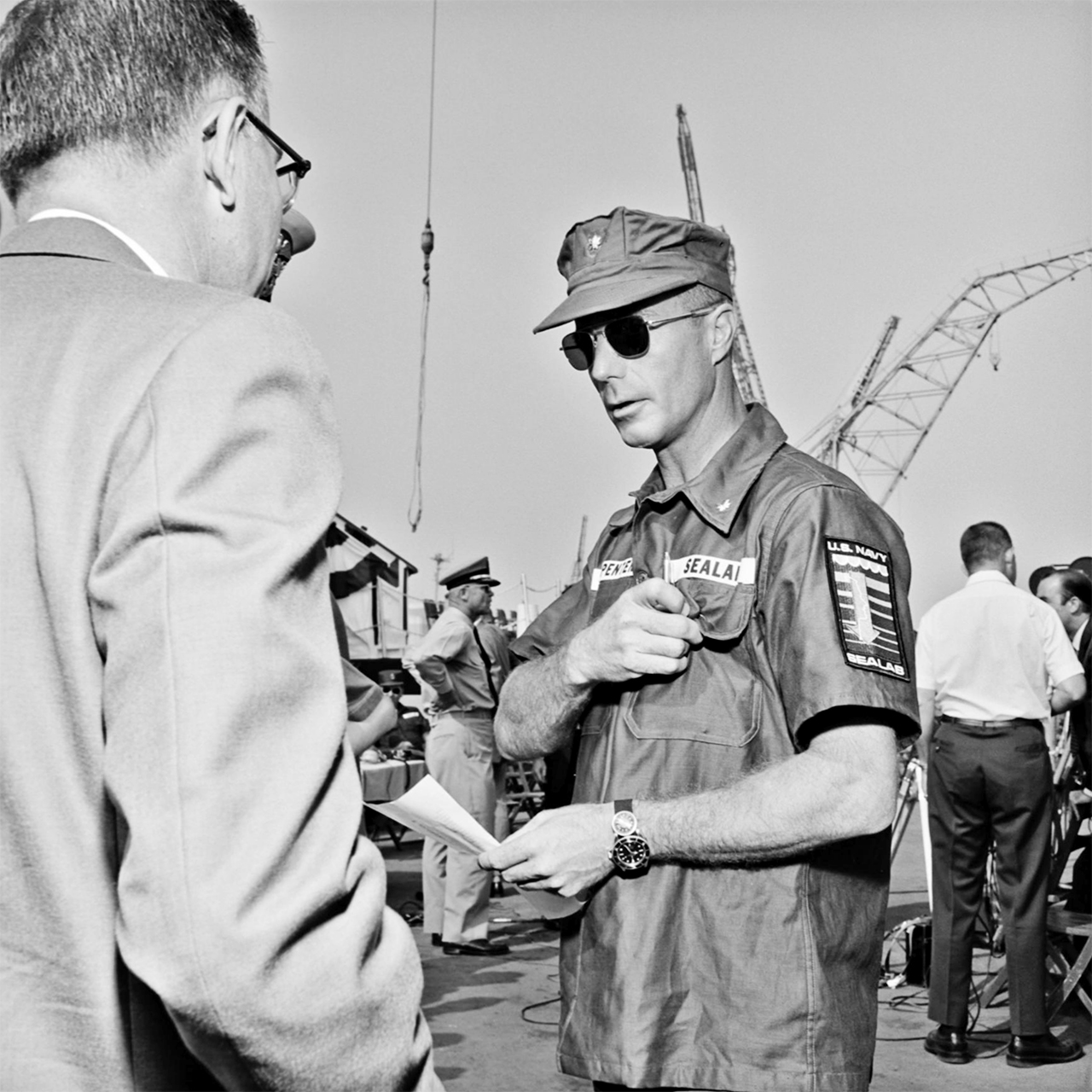
In cooperation with NASA, Carpenter was incorporated into the SEALAB program in early 1964. Dr. George Bond assigned Bob Bart to train the Astronaut to become an Aquanaut. Carpenter was scheduled to take part in SEALAB 1 but during the preparations in Bermuda, a scooter accident in which he was badly injured ruined his changes of making the dive.
The next picture shows the SEALAB 2 habitat floating on the surface shortly before it was lowered to the seabed one mile off the coast.
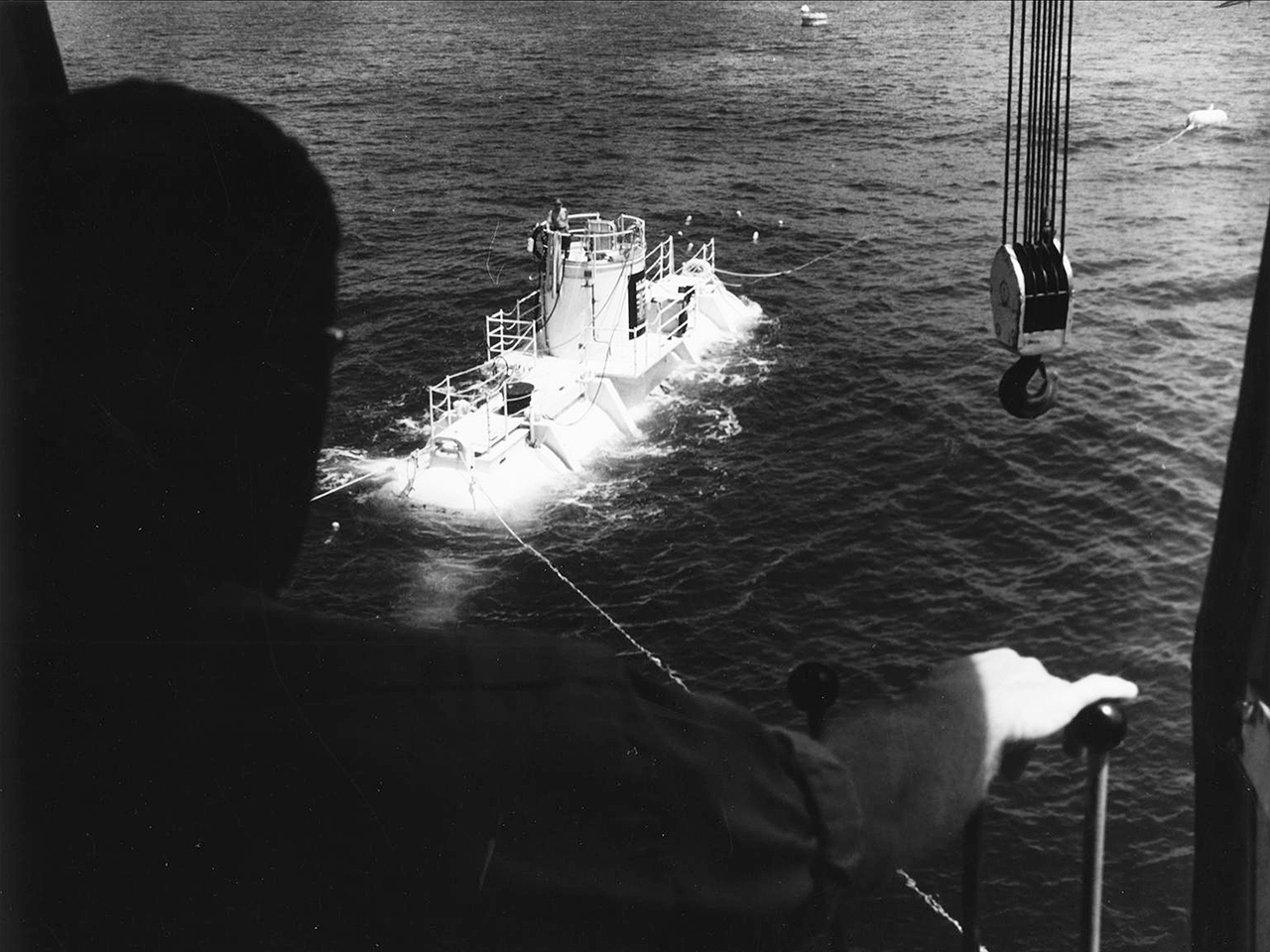
On August 28, 1965, Scott Carpenter and his Team One descended to the habitat.

Most crew members on the photo above are seen wearing a Rolex Submariner but a closer look reveals Berry Cannon (bottom left) was wearing a Blancpain Fifty Fathoms Mil-Spec. Carpenter is clearly wearing a Rolex Submariner 5512.

Scott Carpenter next to Jay Skidmore, a Navy photographer who was also wearing a Rolex Submariner.
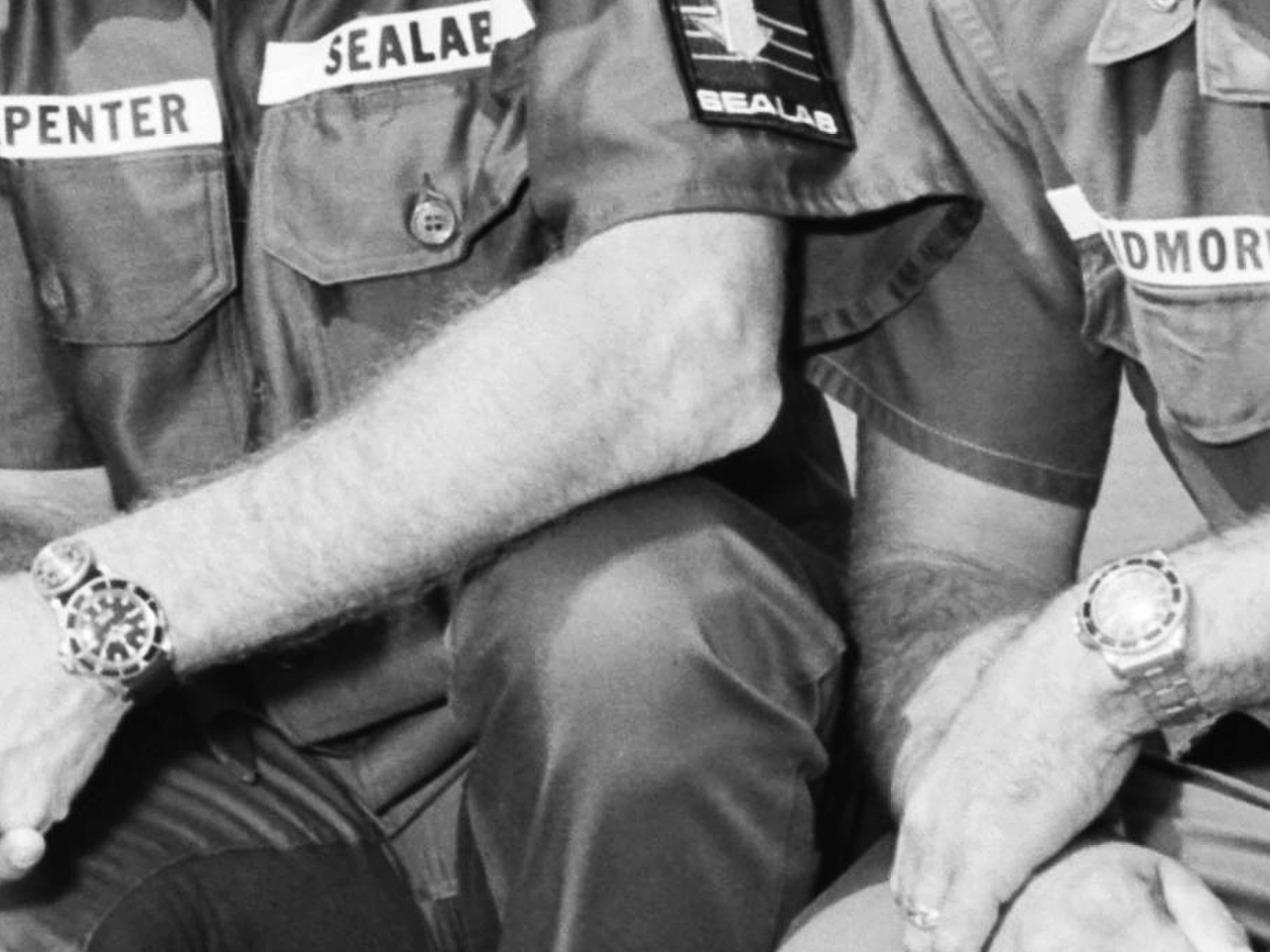
Jay Skidmore and Dr. Robert Sonnenburg, the team doctor. Sonnenburg left the habitat with Team One but returned with Team Three for the final fifteen days to understand the effects of going in and out of prolonged saturation under real working conditions. Sonneburg was also wearing a Rolex Submariner.

SEALAB 2 was sitting at the edge of a canyon that was a lot deeper than the habitat location. Since the landing site was not level, Team One nicknamed the habitat Tiltin Hilton.

The Aquanauts had to perform a variety of functions, from attempting to salvage the sunken fuselage of a fighter jet, working on oceanographic projects, setting up underwater weather stations, planning and executing deeper dives, to maintaining all of the habitat equipment, evaluating diving equipment and even interfacing with dolphins. In addition, the Aquanauts had to go through daily medical tests and extraction of blood samples.

The picture below shows Earl Murray from the Scripps Institution of Oceanography discussing tasks with U.S. Navy diver Cyril Tuckfield. The latter is clearly wearing a Rolex Submariner.

The Aquanauts made several deeper dives to explore the canyon next to the location of the habitat. Billie Coffman was also wearing a Rolex Submariner.

Prior to completion of Team One’s mission, some members of Team Two decended to the habitat to exchange data and bring each other up to speed. Subsequently Team One – minus Scott Carpenter who stayed underwater as leader of Team Two for another 15 days (30 days in total) – left the habitat and transferred via Personnel Transfer Capsule (PTC) to the Diving Decompression Chamber (DDC) aboard the diving support vessel for two full days of decompression.
During his stay at the bottom, Aquanaut Carpenter exchanged greetings with Astronaut Cooper orbiting the Earth in Gemini 5. U.S. President Lyndon B. Johnson called in as well to congratulate the team on their success.
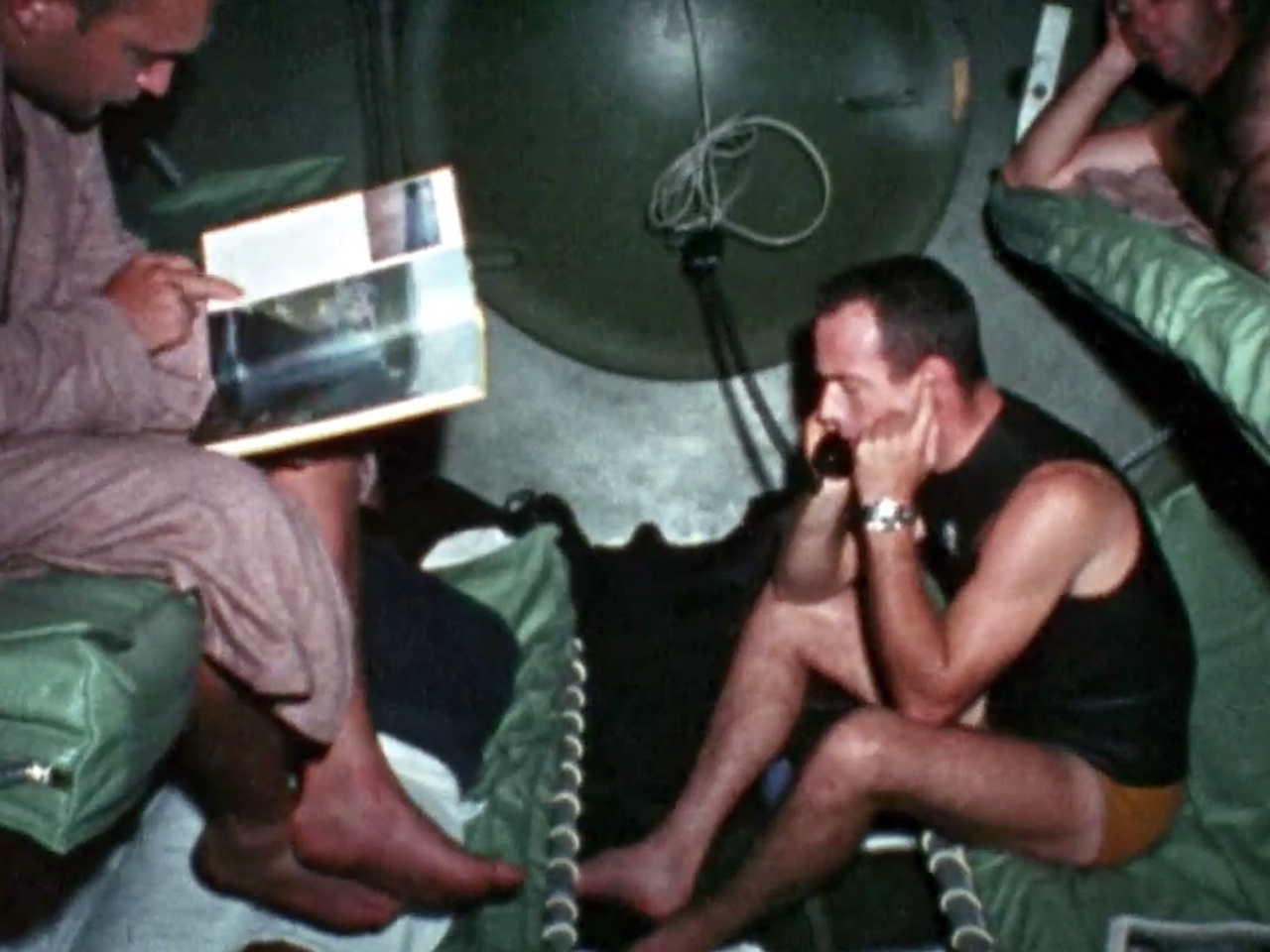
After 45 days, SEALAB 2 accomplished its mission without major incidents. It proved man can live and do useful work under the sea. The habitat was raised to the surface and returned to the shipyard in San Fransisco where it would undergo modifications for future projects.
The picture below was taken during a news conference on September 28, 1965 at the end of Scott Carpenter’s record saturation dive of 30 days.
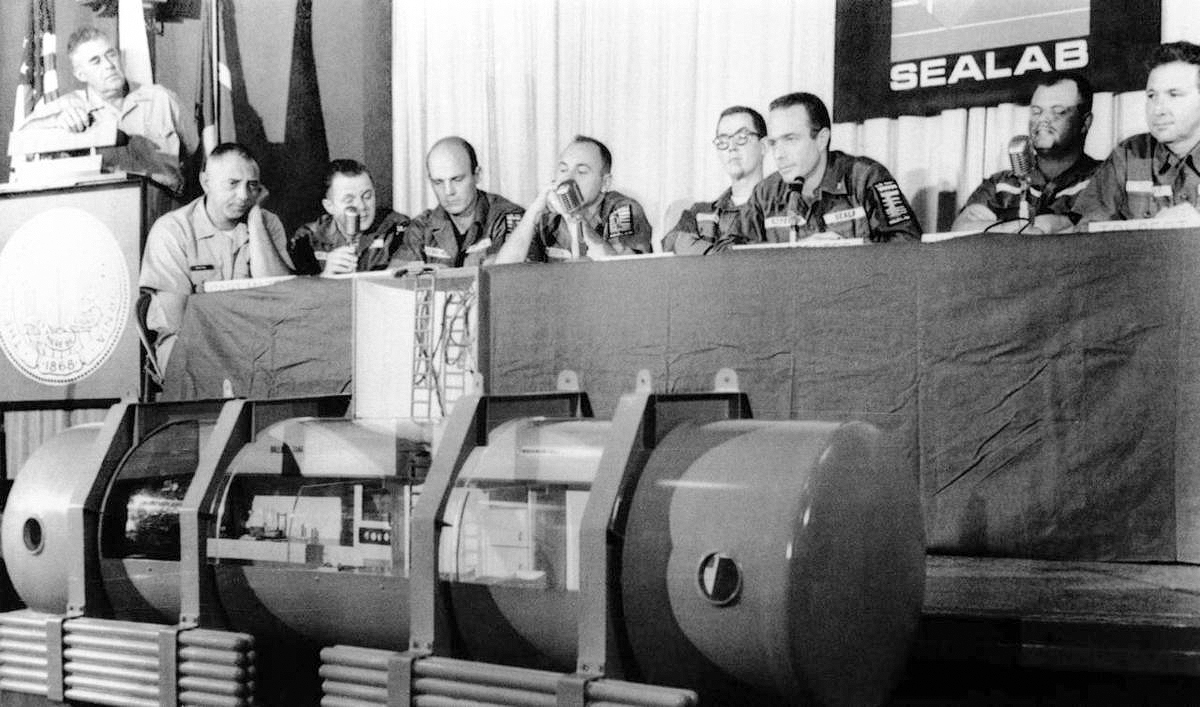
During decompression, the SEALAB 2 Aquanauts witnessed an interesting phenomenon. Some of the watches literally exploded as the pressure inside the Deck Decompression Chamber (DDC) reached surface levels. Helium had slowly entered the watches through the rubber gaskets during the long stay at the bottom and became trapped inside the cases. Unable to escape fast enough, the pressure blew out the weakest part of the watches, the plexi crystals.

Bob Barth, who immediately understood the forces at work, came up with the idea of a one-way pressure release valve. After mentioning his idea to a fellow diver named T. Walker Lloyd, Bob’s concept found its way to Rolex Geneva and served to create a new generation of professional diving tool watches, the Rolex Sea-Dweller with patented Gas Escape Valve.
Read more: The Sea-Dweller Chronicles: Genesis of the decompressing watch
Read more: The Sea-Dweller Chronicles: Dry run and teaming up with Comex
Diving was no longer a matter of minutes or hours respectively, as it had been with compressed air. Saturation diving allowed man to stay underwater indefinitely. With this in mind, Rolex equipped the Rolex Sea-Dweller with a date complication to help the Sea-Dwellers keep track of life on the surface.
SEALAB 2 was modified for the next big underwater adventure that would take saturation diving to the next level, SEALAB 3.
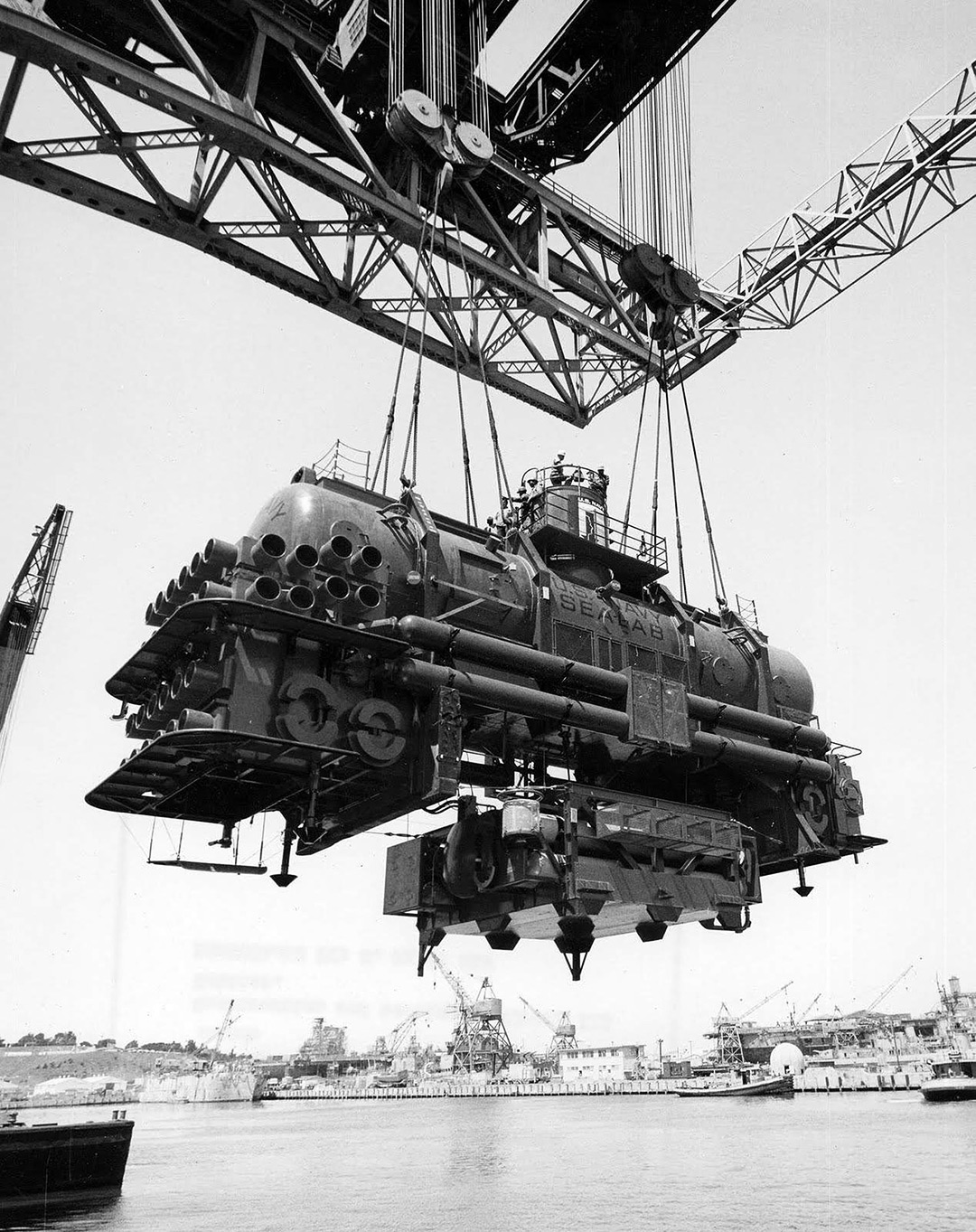
On Feb. 1969, SEALAB 3 was lowered to 610 ft (190 m) off San Clemente Island not far from where SEALAB 2 had taken place. It was soon established that the habitat was leaking. To save the habitat, Bob Barth, Berry Cannon and two other divers were pressurized to a depth of 610 ft aboard the diving support vessel and sent down to the habitat in a Personnel Tranfer Capsule (PTC). The long descent to the bottom was a torture as the diving bell was unheated and helium is known to cause body heat to escape more rapidly.
The first attempt at opening the hatch of the habitat was fruitless. After 15 minutes, the Aquanauts were brought back to the surface. Four hours of rest later, Bob Barth, who was teamleader of Team One, made the decision to return to the bottom to try again.

During the second attempt, Berry Cannon passed out and died due to a terrible mistake that had occured with his breathing device. In the rush to save the habitat, it was forgotten to add the chemicals necessary to remove carbon dioxide from the exhaled breathing gas.
The above picture of Berry Cannon looking at his watch is truly profound. It is one of the last images of Berry Cannon alive.
Berry Cannon died on Feb. 17, 1969. Reports that SEALAB 3 had been sabotaged were unfounded.
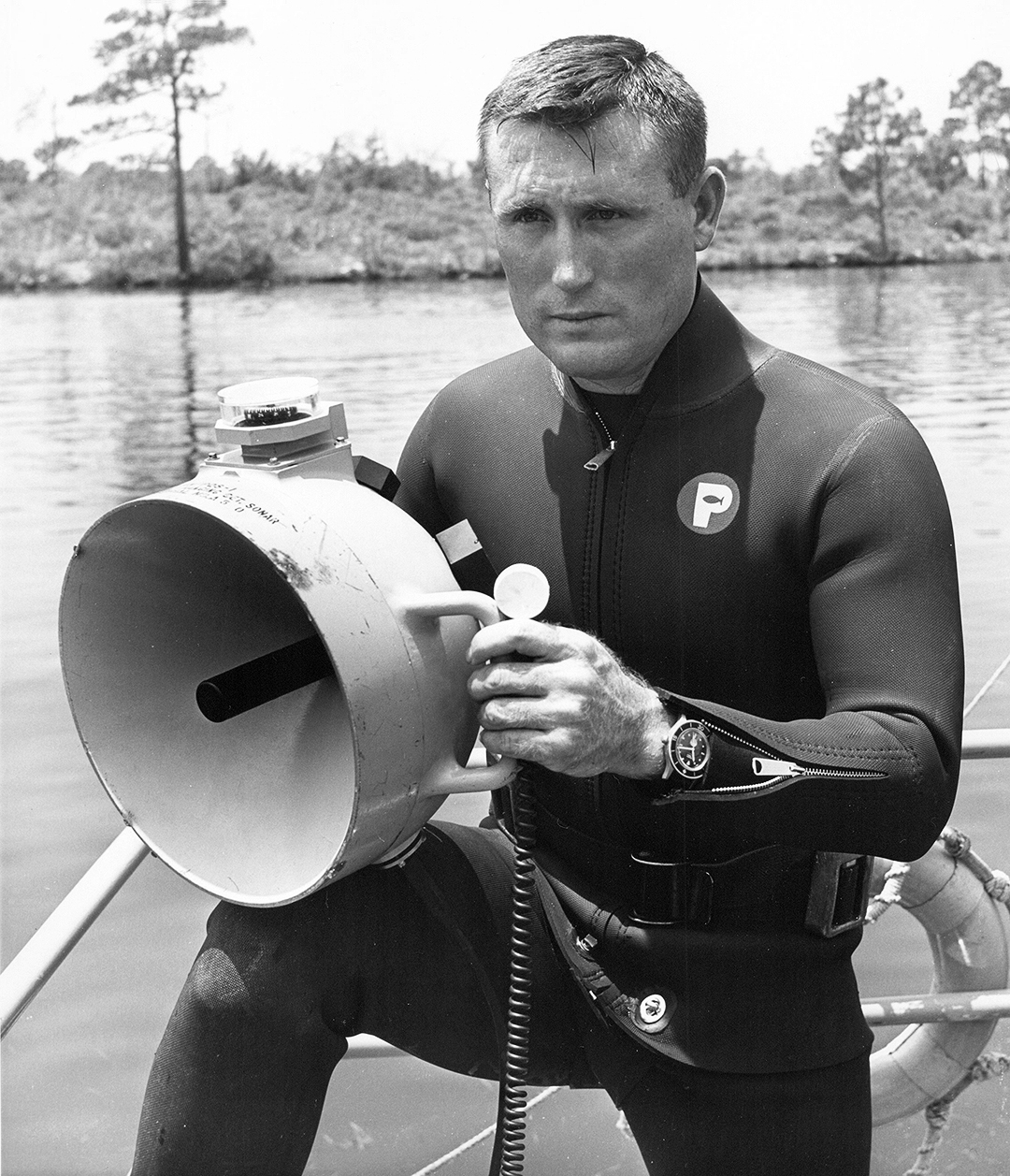
After this tragic accident, the Navy determined that underwater habitats were not necessary for saturation diving. The future belonged to new concepts like the U.S. Navy Mark 1 Deep Dive System (DDS) develped in 1968, which provided divers with a safe surface habitat aboard a diving support vessel. Saturation divers live in a Deck Decompression Chamber (DDC) for the duration of the mission. Via Personnel Transfer Capsule (PTC), they are lowered to the bottom to perform their work and return to their surface habitat to rest.
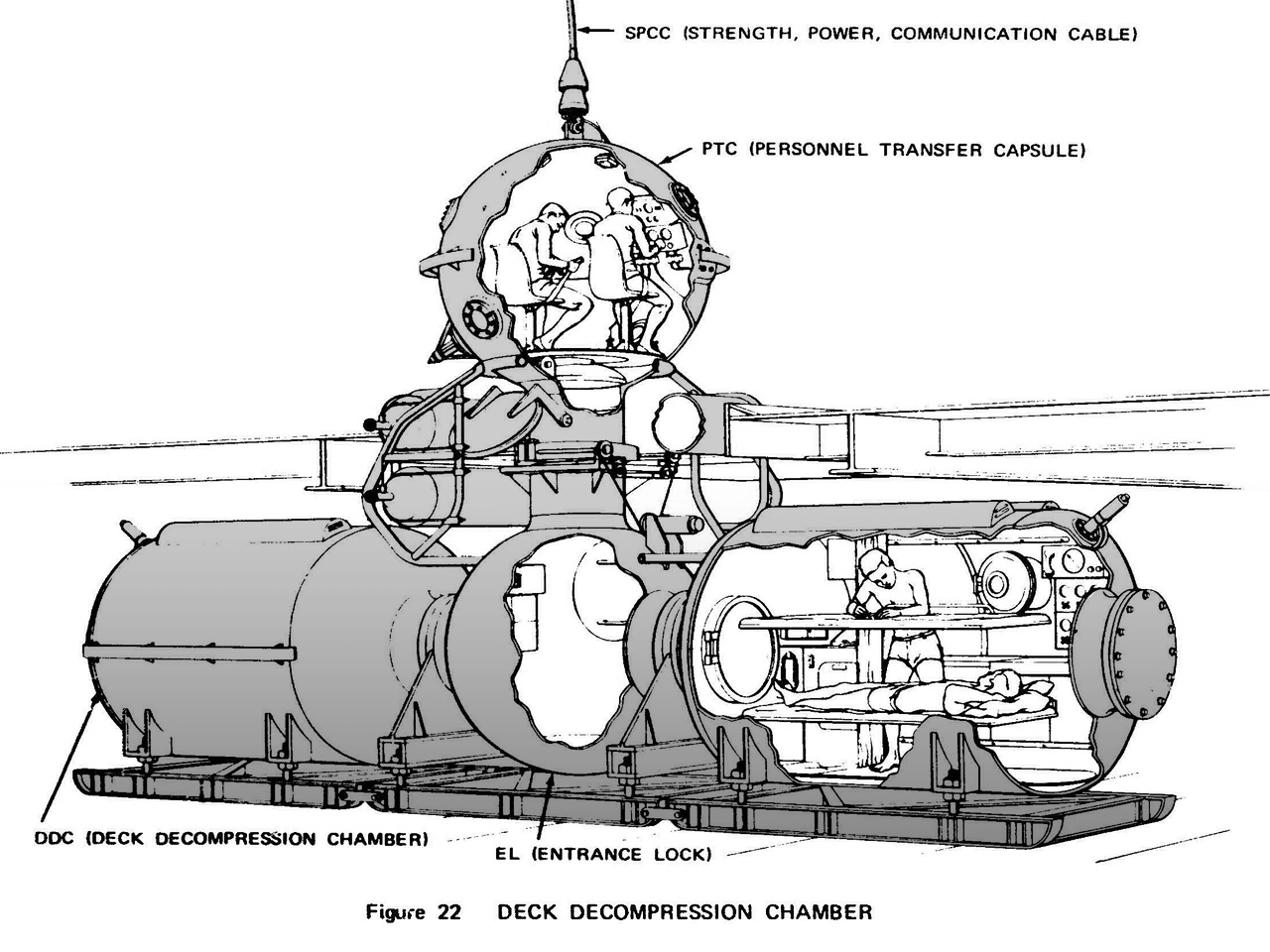
Another important advantage of this concept is the fact that the diving site can be left relatively quick if storms at sea put the operation at risk.
Thank you for your interest.
History of the Rolex Sea-Dweller
The Rolex Submariner 5512 was the first Submariner with a crown guard and is an important milestone in the history of professional Rolex diving tool watches. The following infographic shows this model in its historical context.

This graphic is available as a high quality print in two sizes:
- Regular small, 120cm x 68cm (47 x 26 inch): EUR 85.00 (plus shipping)
- Regular, 150cm x 85cm (59 x 33 inch): EUR 120.00 (plus shipping)
Limited: 50 pieces, numbered and signed by Bob Barth, the legendary U.S. Navy Aquanaut who pioneered saturation diving during the famous SEALAB missions. Bob developed the idea for the Rolex Gas Escape Valve: Sold out

Superbe document d’histoire!!!
Merci pour cet article, bravo.
LikeLiked by 1 person
Another great article Jose…
Thanks for sharing!
LikeLiked by 1 person
simply amazing. Thankyou!!!
LikeLike